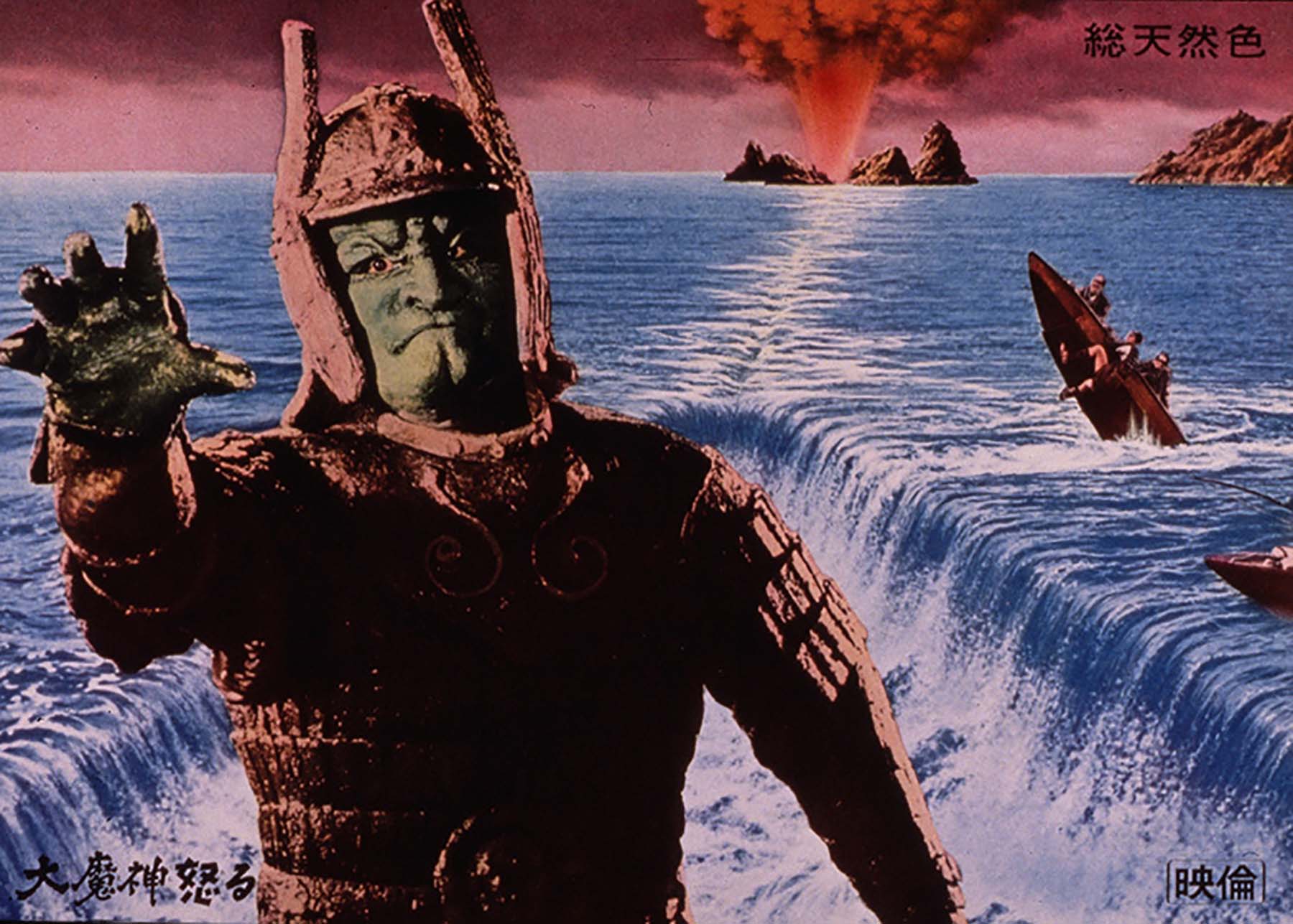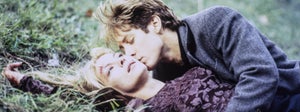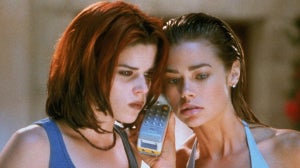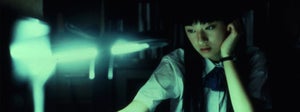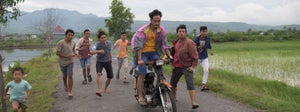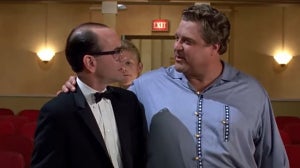
On July 26th 2021, Daiei’s hugely underrated Daimajin Trilogy received a Limited Edition Blu-ray release from Arrow and the digital version can currently be watched on ARROW. It came just a few months after two distinct eras of the studio’s Godzilla-baiting kaiju superstar Gamera also received the Blu-ray treatment across two distinct periods: the mid-‘60s Showa era at the height of the giant monster boom, and the series’ highpoint with the Heisei revival of the ‘90s. All our Gamera titles can also be found in all their glory on ARROW.
With so many kaiju (“strange creatures” in Japanese) now out to do battle in glorious high definition, Arrow put Japan’s beastly silver screen heroes and villains to test in the form of the ultimate hypothetical battle royale. Three leading studios. Ten oversized creatures. And more radioactive scuffles than we care to count. There can only be one winner…
Using a mixture of scientific data, historical research and behavioural analysis, we did the hard work to determine which kaiju would end up the last man standing. Who is the most formidable of them all? The results are as thrilling as they sound.
Gappa
Nikkatsu Studio is best known for works by Shōhei Imamura and Seijun Suzuki, as well as Teruo Ishii’s Blind Woman’s Curse and a range of raunchy pinku eiga. But their sole kaiju effort, 1967’s Gappa the Triphibian Monster, didn’t really give the titular ancient reptilian birds much of a chance to prove themselves.
While these beaky, scaly avians — with their blue flame-breath, mach-speed flight and half-hearted roars — do occupy a unique place in the history books, they didn’t really impress too many people on their one outing. The film itself was criticised as a rip-off of the 1961 British monster movie Gorgo. And the creatures themselves look like giant chickens. Hardly screams “terror” does it?
Thanks for taking part: Gappa the Triphibian Monster (Haruyasu Noguchi, 1967)
Mothra
She is generally considered one of the more peaceful kaiju, but there can be no doubts that this winged beast can hold her own.
Upon hatching from an egg in her larval form in 1961’s Mothra, her first move was to jump into the sea and destroy a cruise liner. Within a few hours, she’d withstood nuclear radiation guns after cocooning against the Tokyo Tower, emerging as a disco-ball-eyed beauty to wreak havoc soon after. New Kirk City didn’t stand a chance — with Mothra’s gale-force winds toppling tower blocks in an instant.
In other appearances, she flaunts antenna beams and poison stingers — battling against, and alongside, Godzilla in countless showdowns. True, she sometimes gets herself killed despite her durability and usefulness, but there’s always another larval offspring or conveniently forgotten egg left somewhere else. This marks Mothra as one of the most enduring kaiju presences out there.
A star is born: Mothra (Ishirō Honda, 1961)
Biollante
This criminally under-utilised Godzilla baddie was the thorny star of the 1989 film Godzilla vs. Biollante. And while she does initially resemble a giant rosebud, do not be fooled. This kaiju plant has “a human spirit” — and the mutated cells of the big G himself.
In her final form, Biollante is genuinely terrifying. She boasts tentacles with vicious, venus fly-trap heads that can pursue fleeing men with ease — choking them out like they were rag dolls. Cut them off, and she’ll regenerate more while breathing poisonous spores and slugging slimy green appendages. Most imposing is her crocodilian mouth lined with rows of shark-like teeth — a uniquely intimidating focal point that assures her status as one of the most fearsome kaiju designs out there.
At 220,000 tons, she is also likely the heaviest creature in the Godzilla catalogue. But the fact that she doesn’t put up much of a fight resigns her a lower ranking on this list. In the end, this awesome creature is actually a bit of a pushover.
In full bloom: Godzilla vs. Biollante (Kazuki Omori, 1989)
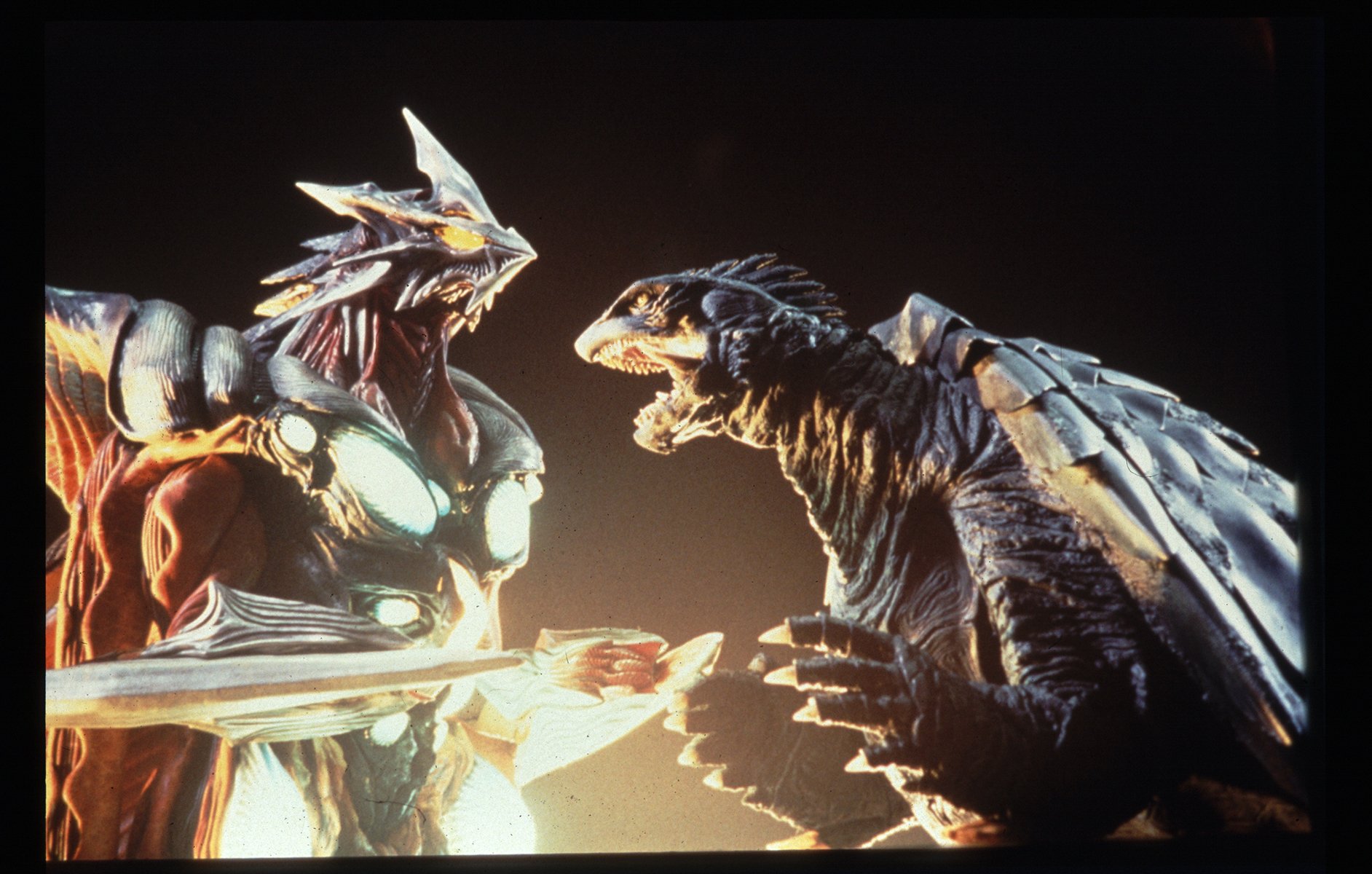
Iris
Rodan’s great and all — he’s that massive pterodactyl who is also Godzilla’s best friend — but when it comes to airborne menaces, Daiei’s Iris might be the greatest.
The demonic antagonist of the third Heisei Gamera film is capable of sucking the lifeforce out of any human that gets in her way, leaving behind only a decrepit, mummified husk. It’s a genuinely fear-inducing trait — something plucked straight out of a horror film.
But on a grander, Gamera-sized scale, Iris is genuinely threatening. With harpoon-like tentacles that can impale the big terrapin, this near-invincible being poses a genuine destructive threat. And it doesn’t help that she’s conjoined to a Gamera-hating orphan hellbent on destroying the shelled Guardian of the Universe.
She’s the boss of the deadly Gyaos, as well, which lends her an air of authority. And the fact that Gamera is left visibly maimed after their final showdown proves it: mess with Iris and you’ll pay in blood.
At her most vengeful: Gamera 3: Revenge of Iris (Shusuke Kaneko, Shinji Higuchi, 1999)
Gigan
An extraterrestrial-robot-dinosaur. Yes, Gigan is one of the maddest kaiju out there.
What were they smoking when they came up with this guy? He has scythes for hands, pincer-like mandibles, a glowing red visor, and a buzzsaw protruding from his abdomen. It doesn’t get much more brutal than that.
He’s featured in several incarnations across the Godzilla series — and he always looks the part. But Gigan’s greatest claim is that he was the first kaiju to make Godzilla bleed, which is no mean feat. He does have a knack for wimping off back to where he came from — outer space — when the going gets tough, though, so points are docked for that.
For a decidedly more naff spin on blade-wielding kaiju, check out the 1969 Gamera villain Guiron, who is literally a quadrupedal alien with a kitchen knife for a head. Named for the French word “guillotine”, he looks like a cross between a rhinoceros and a sawfish — only much, much sillier.
Tokyo chainsaw massacre: Godzilla vs. Gigan (Jun Fukuda, 1972)
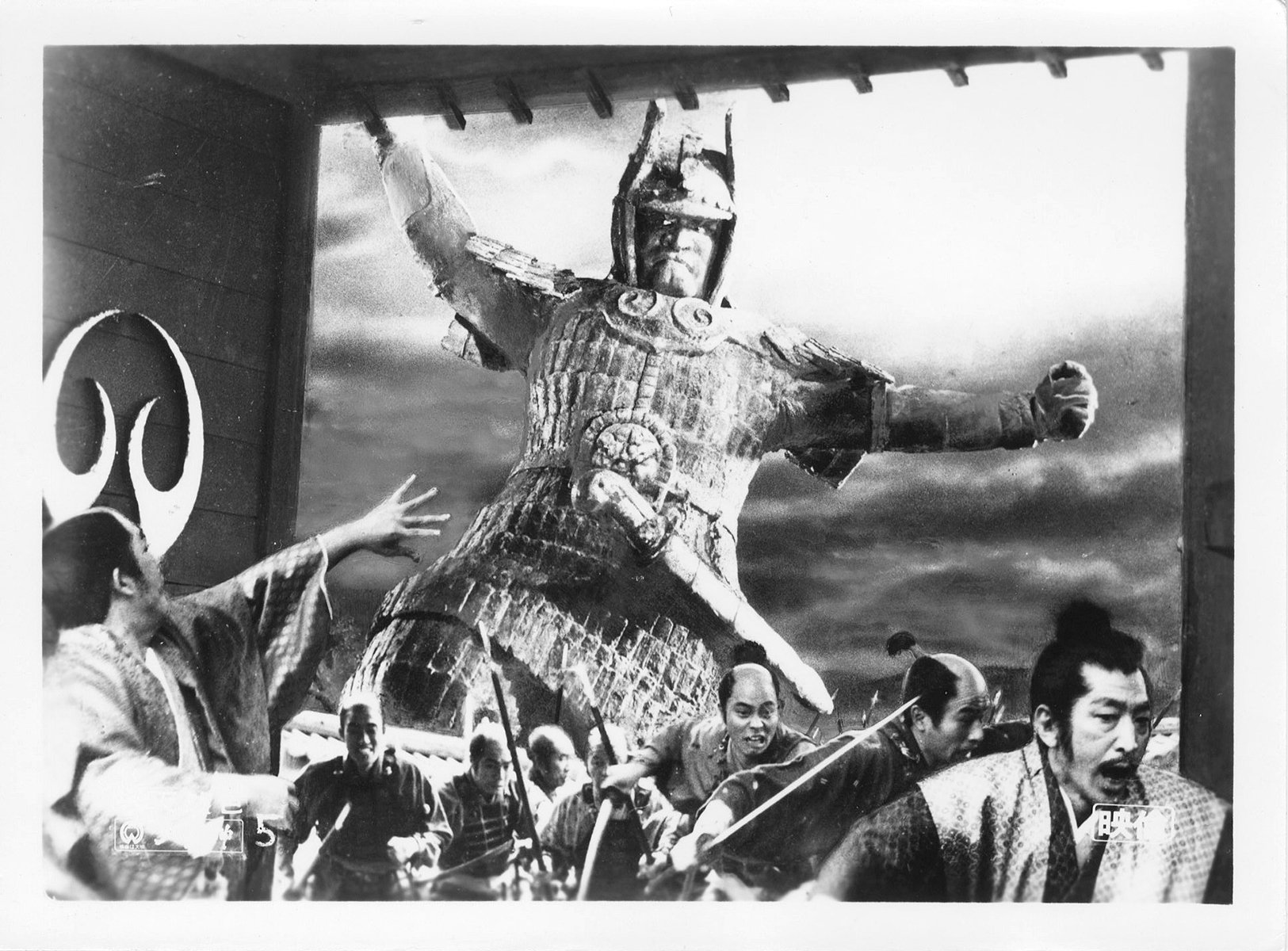
Daimajin
Much of the horror of Daimajin occurs during the opening act, where a stronghold in Feudal Japan is stormed in a bloody battle, leaving a young boy and his daughter orphaned as their fellow villagers are enslaved. The first appearance of Daiei’s titular Daimajin (dubbed the “Monster of Terror” in some versions), though, is one of awe and wonderment rather than genuine horror.
The colossal statue is seen sitting, inanimate, within the hollow of a “haunted” mountain atop a huge waterfall. Squint a bit, and it could be a scene from Lord of the Rings. Only when the evil invaders learn of Daimajin’s presence and attempt to destroy the stony brute does the God of the Mountain reveal his true nature: he’s a golem of Biblical proportions, capable of wreaking heavenly justice upon the land.
Giant fissures swallow up the invading men as an eerie green light emanates from the earth. The skies turn crimson as thunder and lightning strike, and the mountain colossus breaks into life, showcasing a monstrous grimace (partly inspired by the chiselled cleft chin of Kirk Douglas) beneath his stony mask. He has only one thing on his mind: total and utter destruction, delivered via crushing stone fists and a rampaging fury.
Whether he’d be a match for the nuclear-powered weaponry of some of his other kaiju brethren remains to be seen. Daimajin’s sheer brutality as he crushes men beneath his feet can’t be understated.
Crush. Kill. Destroy.: Daimajin (Kimiyoshi Yasuda, 1966)
King Ghidorah
Three heads, three times the trouble.
First introduced in the 1964 film Ghidorah, the Three-Headed Monster, this iconic kaiju King is a golden-scaled dragon from outer space who laid waste to the planet Venus five thousand years prior to his descent upon the Earth. He is a monster so formidable that lesser beasts flock to his side — and in Destroy All Monsters his impromptu appearance requires all the kaiju on Monster Island to band together to neutralise him in a wild tag-team battle.
While he is notably armless, he’s got scaly wings, two beefy tails, and three heads that spit lightning and energy beams. He’s also arguably the most recognisable of all Godzilla’s nemeses, and by reputation alone, he’s a tenacious old fella.
It must be said that his long-snaking necks do have a tendency to get chomped on, and he’s also been known to fly off into the cosmos when the going gets tough. But ignore him at your peril — he always comes back bigger and stronger.
He’s already back: Invasion of the Astro Monster (Ishirō Honda, 1965)
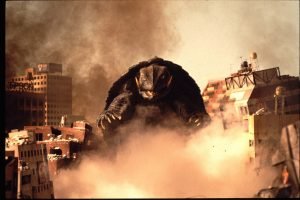
Gamera
Yes, he does look like an oversized terrapin. Yes, he was once known as the “friend of all children.” Yes, he was conceived by Daiei to cash in on the Godzilla boom. But check out the brilliant Heisei trilogy, and there can be no denying it: Gamera is the Guardian of the Universe, and no one can stand in his way.
Taking some clear cues from Jurassic Park, this thoroughly enjoyable trilogy of ‘90s films offers an addictive blend of terror, great creature design and plutonium-powered fun — with the tusked beast the undeniable star.
He shows off his powers in the first entry while battling the slab-headed, raptor-like Gyaos — who themselves are privy to devouring passenger trains and the tasty civilians inside. But Gamera delivers justice via fiery projectiles, a devastating mana beam, and a shell-spinning manoeuvre that can launch him into the sky. In another entry, he survives explosions the size of atom bombs before dispatching a tank-like scarab kaiju with a pulse blasted from his own chest.
There’s a reason “turtle power” has such a great reputation, and we’re almost certain it’s because of Gamera.
Stop that spinning shell, I want to get off: Gamera 2: Attack of Legion (Shusuke Kaneko, 1996)
Destoroyah
Not only is 1995’s Godzilla vs. Destoroyah one of the greatest entries in the monsterverse, it also features two of the best and most fearsome kaiju in the entire canon. This is the film where a lava-bodied, atomic meltdown Godzilla finally meets his match in his most awesomely powerful nemesis: the mighty Destoroyah.
They originated from the weapon that destroyed the 1954 Godzilla, and their introduction is like something taken straight out of Aliens — with a team of heavily armed troopers decimated one by one by the scorpion-like beasts and their life-extinguishing energy beams.
But later on in the film, these mini Destoroyah band together to become a big Destoroyah — and that’s where the trouble really starts. Big D can fly, he has a blade-like horn and he looks like a cross between a gremlin, a bat and the spawn of Satan. He’s also unbelievably massive.
In this monstrous final form, Destoroyah gores the hapless Godzilla Junior straight in the chest with his retractable inner jaw (yes, just like the xenomorphs). It’s a genuinely nasty thing to do to a child, and it sets up a final showdown with Daddy that is perhaps the most memorable in the whole franchise.
Say your prayers: Godzilla vs Destoroyah (Takao Okawara, 1995)
Godzilla
He’s the nuclear-powered king of the monsters, he’s capable of God-like levels of endurance and he boasts weapons that could destroy the very world we live in. It was never going to be anyone else, was it?
The greatest appearance of Toho’s biggest star is surely the 1954 original film — as the giant dinosaur who attacks Tokyo after being disturbed by hydrogen bomb tests. But he’s also saved Japan on countless occasions across the Shōwa era, leaving New York, Paris and Hong Kong in tatters in the process.
He survived being thrown into a volcano during the ‘80s Heisei era. And he suffered a nuclear meltdown that threatened to destroy the Earth in Godzilla vs. Destoroyah. Since then, he seems to get bigger and badder with every appearance, with his terrifying, eyeless presence in Godzilla, Mothra and King Ghidorah: Giant Monsters All-Out Attack providing one visual highlight before audiences saw him grow to a massive 400ft in Shin Godzilla.
Even if you were to get past this Godly reptilian, there’s MechaGodzilla (a weapon created by aliens with impenetrable armour) and Space Godzilla (a mutated clone from beyond the stars) out there somewhere, too.
Catch him at his scariest: Shin Godzilla (Hideaki Anno and Shinji Higuchi, 2016)

Related Articles


